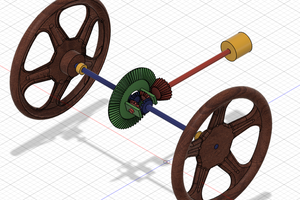Along the way we will share lots of tips about sourcing strange items, making your electronics safer, hacking big machines, and how to help keep interactive artworks from bricking on you in a gallery setting!
**Psst -If you are in the NYC area, you can even go check out this project for free at the Pratt Manhattan gallery until Feb 17!**

The other half of this year-long art project is about rapidly creating silicone and polyurethane molds in the field and replicating natural plant forms collected from all over the world as glowing, UV sensitive leaves. For details on how we made the leaves, check out our other How-To article:
https://www.instructables.com/id/Glowing-Leaves-Ra...
If you want to learn more (especially on the philosophical / artistic side) about this artwork, and many more that were part of Madeline Schwartzman's "See Yourself E(x)ist" exhibition, you can see the manual here:
 blorgggg
blorgggg

 nir
nir
